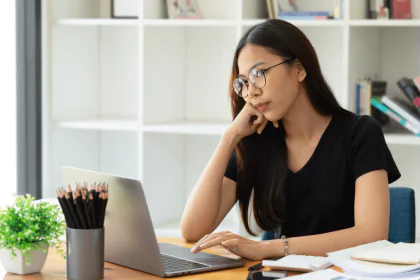Introduction
The Federal Reserve’s decision-making process regarding interest rates has always garnered significant attention. Recently, a noticeable division among Fed officials has emerged, leading to contrasting views on the future of interest rates. This article delves into the complexities of the Fed’s decision, its implications for the economy, and what it means for consumers and businesses alike.
The Fed’s Decision: What Happened and When?
On June 12, 2024, the Federal Reserve made a pivotal announcement regarding its stance on interest rates. The central bank opted to maintain the current interest rates, leaving them unchanged amidst a backdrop of conflicting opinions among its officials. This decision comes at a critical juncture for the U.S. economy, which has been experiencing fluctuating growth rates and varying inflationary pressures.
Maintaining current interest rates provides stability but also reflects underlying uncertainties in our economic forecast.”
Initial Reactions and Immediate Implications
The immediate market reaction to the Fed’s decision was mixed. Investors and analysts quickly analyzed the implications, with stock markets showing a degree of volatility. The uncertainty surrounding the future path of interest rates added to this volatility, reflecting the broader economic sentiment.
The Division Among Fed Officials: A Closer Look
The division among Fed officials stems from differing views on economic indicators and their implications. Some officials advocate for a cautious approach, emphasizing the need to control inflation and prevent the economy from overheating. Others argue for a more aggressive stance to support continued economic growth and mitigate potential downturns.
Economic Indicators and Their Interpretations
Inflation Trends
Inflation has been a key concern for the Fed. Recent data shows a mixed picture, with core inflation rates hovering around the Fed’s target but showing signs of variability. Some officials believe that inflationary pressures are temporary and will subside as supply chain issues resolve. Others fear that sustained inflation could erode purchasing power and destabilize the economy.
Employment and Labor Market Dynamics
The labor market has shown resilience, with unemployment rates remaining low. However, disparities in employment across different sectors and regions raise concerns. Some Fed officials highlight the need to support job creation and wage growth, while others caution against policies that could lead to wage-price spirals.
The division within the Fed highlights the complexities of navigating inflationary pressures while supporting economic growth.”
The Impact on Consumers and Businesses
Consumer Spending and Borrowing
Interest rates directly influence consumer behavior, particularly in terms of spending and borrowing. With rates unchanged, consumers may continue to benefit from relatively low borrowing costs, supporting spending on big-ticket items like homes and cars. However, the uncertainty may also lead to more cautious spending habits.
Business Investments and Planning
For businesses, the Fed’s decision impacts investment decisions and financial planning. Stable interest rates can provide a conducive environment for capital investments and expansion. However, businesses must navigate the uncertainty and potential changes in monetary policy, affecting long-term strategic planning.
Future Projections: What to Expect?
The Fed’s future actions will likely depend on evolving economic conditions. If inflation continues to rise, pressure may mount for rate hikes. Conversely, if economic growth slows or inflation stabilizes, the Fed may maintain its current stance. The divided opinions among Fed officials suggest that future decisions will be closely scrutinized and potentially contentious.
Conclusion
The Federal Reserve’s decision to maintain current interest rates amidst internal divisions highlights the complexities of monetary policy in a dynamic economic environment. As the economy navigates through varying inflationary pressures and growth patterns, the Fed’s actions will remain a focal point for markets, consumers, and businesses. Understanding these dynamics and their implications is crucial for stakeholders across the board.
FAQ — Popular Questions and Answers
The Fed’s decision to keep interest rates unchanged means that consumer borrowing costs remain stable, which can support spending on items like homes and cars.
Fed officials are divided due to differing interpretations of economic indicators, such as inflation trends and labor market dynamics, leading to contrasting views on the appropriate monetary policy.
Businesses should consider the stability in borrowing costs but also prepare for potential changes in monetary policy, which could affect long-term investment decisions and financial planning.
Future Fed decisions will depend on evolving economic conditions. Changes in inflation or economic growth could lead to adjustments in interest rates, impacting consumer behavior and business investments.












